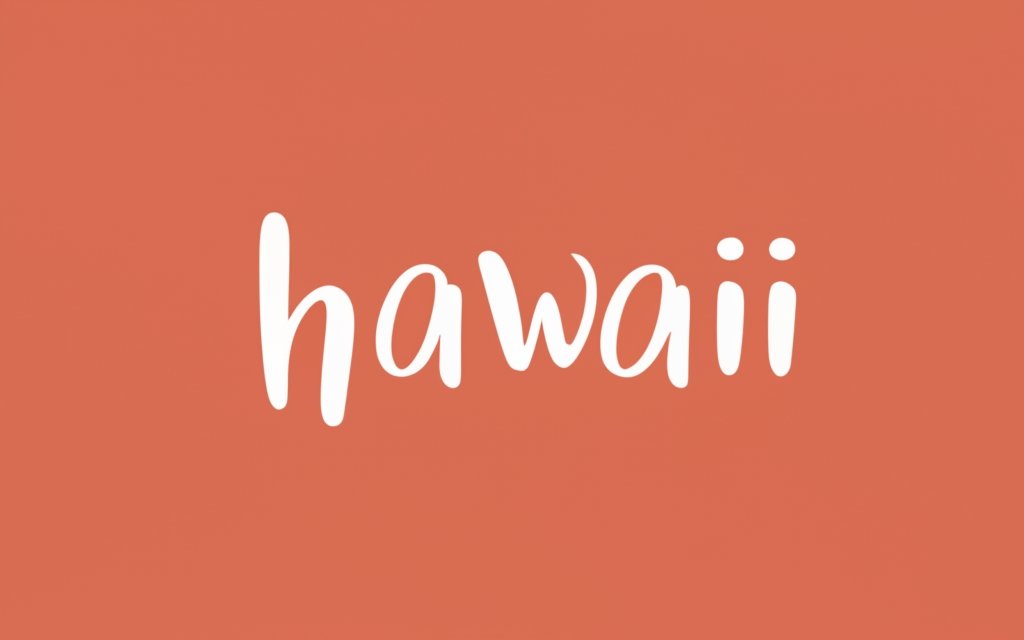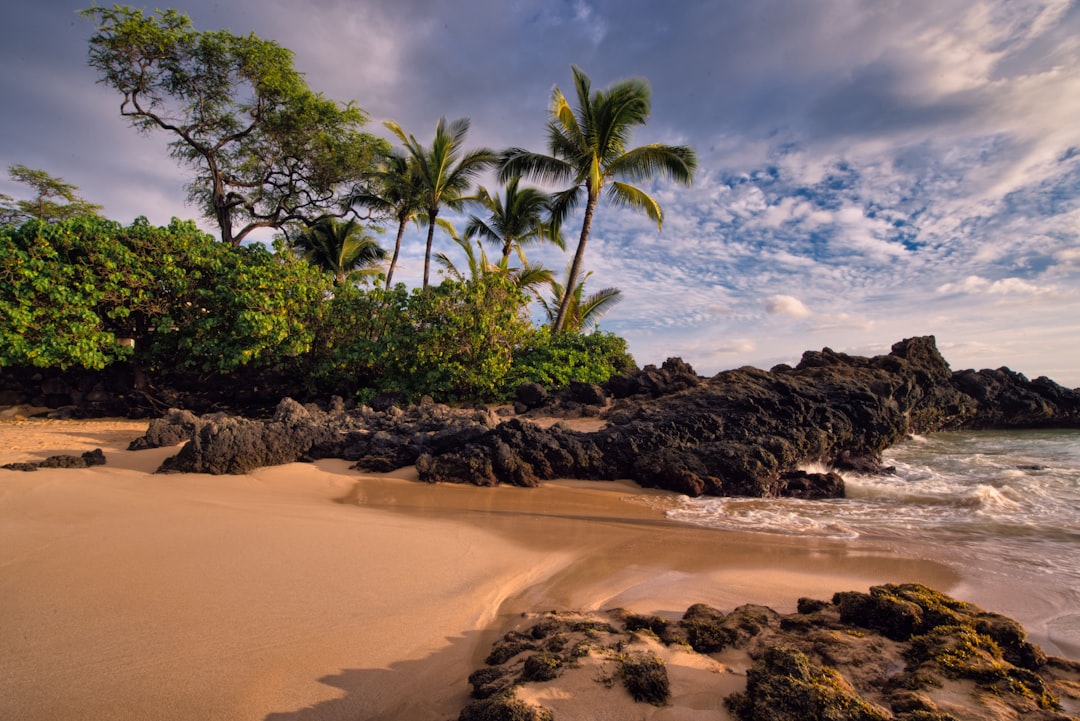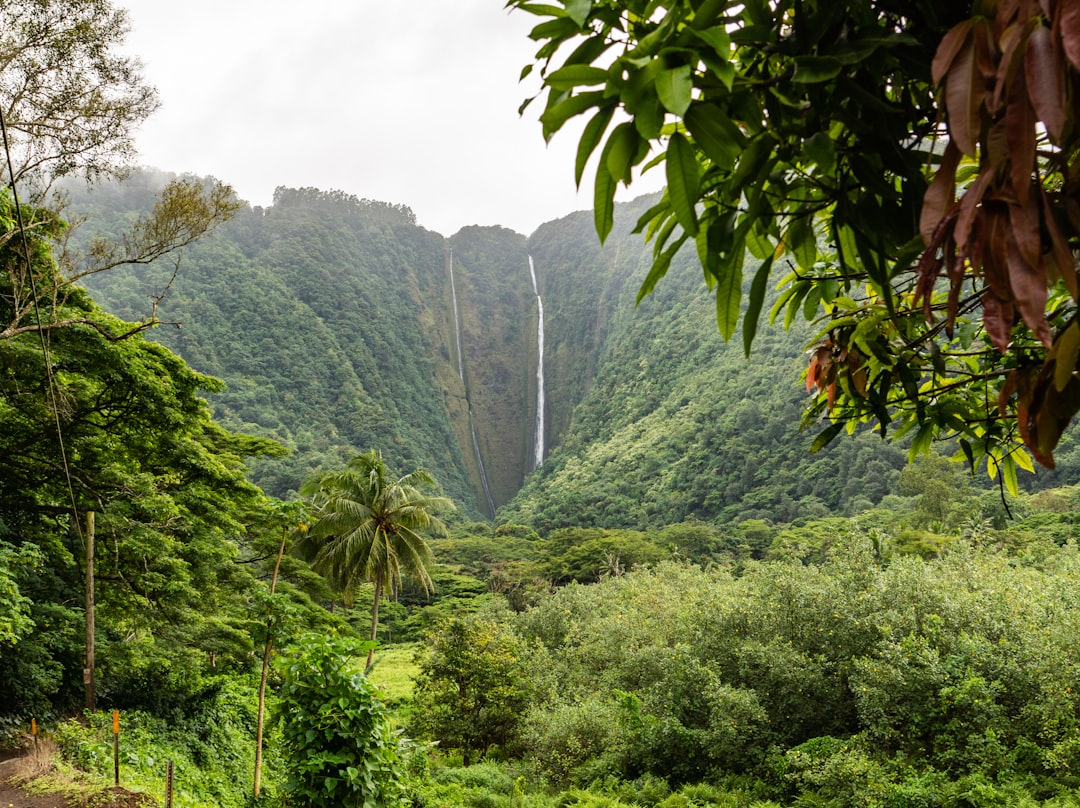Hawaii Branding | Key Elements To Branding Your Business In Hawaii
What is Branding?
Branding is a crucial aspect of any business or organization, as it encompasses the overall perception and image that customers have of the company. It goes beyond just a logo or name; it is the emotional and psychological connection that people have with a brand. Branding involves creating a unique identity and positioning for a business, product, or service in the minds of consumers. It is about conveying the values, personality, and essence of the brand and differentiating it from competitors. Effective branding can help establish loyalty, credibility, and trust among customers, while also attracting new prospects. With the right branding strategy, businesses can create a strong and recognizable presence in the market, enabling them to stand out and leave a lasting impression on their target audience.
Hawaii: An Ideal Place to Brand Products and Services
Branding plays a crucial role in establishing a strong identity and connection with consumers. When it comes to branding products and services, Hawaii stands out as an ideal location. With its rich local culture, deep ties to the land, and strong support for Hawaii-made products and producers, the islands offer unique advantages for businesses.
Hawaii’s local culture is a vibrant tapestry of traditions, values, and stories, providing a compelling backdrop for branding initiatives. By tapping into the essence of Hawaii, businesses can create authentic experiences that resonate with consumers on a deeper level. From incorporating traditional designs and motifs to showcasing the unique flavors of the islands, businesses in Hawaii can infuse their branding with a sense of place and authenticity.
Moreover, Hawaii’s support for Hawaii-made products strengthens the branding process. The state takes pride in its locally produced goods and emphasizes the importance of supporting local businesses. By branding their products as “Hawaii-made,” businesses can tap into this strong sense of community and pride, which resonates with consumers looking for authenticity and a connection to the land.
Whether it’s through responsible tourism branding communications or partnering with local photographers to feature Hawaii-made products, the branding opportunities in Hawaii are abundant. By embracing Hawaii’s culture, emphasizing the authenticity of their offerings, and aligning with the community’s values, businesses can create a powerful connection with consumers and establish a strong brand presence.
In summary, Hawaii offers a unique advantage for businesses looking to brand their products and services. By harnessing the richness of the local culture, supporting Hawaii-made products, and fostering authenticity, businesses can create a strong brand identity that resonates with consumers, connecting them to the land and heritage of the islands.
Developing a Brand Strategy
Brand strategy is a critical component of any successful business. It involves creating a cohesive and consistent brand identity that resonates with consumers and sets a business apart from its competitors. In Hawaii, developing a brand strategy offers unique advantages. The rich local culture, deep ties to the land, and strong support for Hawaii-made products provide a strong foundation for businesses to build their brand upon.
By incorporating traditional designs, showcasing the unique flavors of the islands, and embracing the community’s values, businesses in Hawaii can create authentic experiences that establish a powerful connection with consumers. This connection, rooted in the essence of Hawaii, helps to differentiate a brand and build a loyal customer base. Thus, developing a brand strategy in Hawaii involves tapping into the cultural richness and authenticity of the islands while aligning with the community’s values. This combination creates a strong brand presence that resonates with consumers and sets a business up for success.
Understanding Your Target Market
Understanding Your Target Market: A Key to Successful Branding
To create effective branding strategies, it is crucial to have a deep understanding of your target market. By analyzing the information provided in the Background Information, valuable insights can be gained to craft compelling branding messages that resonate with potential customers.
The Hawaii Tourism Authority’s (HTA) Global Marketing Team plays a pivotal role in understanding target markets and guiding branding efforts. With a focus on expanding Hawaii’s reach globally, this team conducts extensive research and analysis to identify the main source markets for Hawaiian tourism.
Through market insights and competitive analysis, HTA gains a comprehensive understanding of traveler preferences, behaviors, and trends. This information allows them to tailor branding messages to different segments effectively. Whether it’s promoting the breathtaking natural beauty of Hawaii’s landscapes or highlighting the unique cultural experiences, HTA carefully designs marketing collateral to engage their target market.
By delving deep into target market analysis, HTA can quickly adapt to the evolving needs and interests of prospective visitors. Through their innovative marketing initiatives, HTA aims to position Hawaii as a top destination for responsible tourism while highlighting the authenticity of locally made products and sustainable practices.
In conclusion, understanding your target market through thorough analysis is essential in successfully crafting and executing branding strategies. With the support of HTA’s Global Marketing Team and their in-depth market insights, Hawaii can continue to attract visitors from main source markets while nurturing a sustainable tourism industry.
Setting Goals & Objectives
Setting goals and objectives for your Hawaiian branding program is a crucial step in developing a successful brand strategy. By clearly defining your business objectives, you can align them with your brand strategy to ensure consistency and effectiveness in your branding efforts.
First and foremost, it is important to conduct a thorough target market analysis. This involves identifying your target audience, understanding their needs, preferences, and behaviors, and determining how your brand can effectively communicate with them. By understanding your target market, you can set specific goals that are relevant and appealing to them.
Additionally, conducting a competitive analysis is essential in setting goals and objectives. By analyzing your competitors’ branding strategies, strengths, and weaknesses, you can identify opportunities and differentiate yourself in the market. This analysis will also help you set realistic goals that can be achieved within your competitive landscape.
When setting goals and objectives, it is important to consider your desired brand positioning. This includes determining how you want to be perceived by your target market and what unique value proposition your brand offers. By aligning your goals with your desired brand positioning, you can ensure that your branding efforts are cohesive and consistent.
In conclusion, setting goals and objectives for your Hawaiian branding program requires a thorough understanding of your target market, a comprehensive competitive analysis, and a clear vision of your desired brand positioning. By considering these key elements, you can develop a strong brand strategy that effectively communicates with your audience and distinguishes your brand in the market.
Crafting the Brand Identity & Message
Crafting a strong brand identity and message is crucial for any business or destination to effectively communicate with its target audience. In the case of Hawaii branding, it is essential to align with the Mālama Hawai‘i program and showcase the cultural integrity of the Hawaiian language, customs, and practices.
By aligning with the Mālama Hawai‘i program, a responsible tourism branding communications program, Hawaii branding can demonstrate its commitment to the preservation and promotion of the unique culture and natural environment of the islands. This program emphasizes sustainable tourism practices and encourages visitors to actively engage with and respect the Hawaiian culture.
The brand identity and message should resonate with mindful travelers who seek authentic experiences and prioritize cultural understanding and respect. Hawaii branding should highlight the rich traditions and history of the islands, incorporating elements such as Hawaiian language, customs, and practices into its branding materials.
By showcasing the cultural integrity of Hawaii, the brand message can communicate the genuine and unique experiences that await mindful travelers. Whether it’s through storytelling, visuals, or interactive experiences, the brand identity should convey the essence of Hawaii’s cultural heritage and its deep connection to its natural environment.
Crafting a brand identity and message that aligns with the Mālama Hawai‘i program and showcases the cultural integrity of Hawaii will not only attract mindful travelers but also foster a sense of pride and ownership among locals. By promoting responsible tourism and highlighting the beauty and authenticity of the Hawaiian culture, Hawaii branding can truly set itself apart and make a lasting impression on its target audience.
Defining the Creative Direction & Visual Elements
A successful Hawaiian branding program requires a strong creative direction and visually compelling elements to effectively communicate the unique story of the brand. The visual language of the brand should be authentic, immersive, and reflective of the cultural integrity of Hawaii.
To incorporate imagery and dramatize the brand’s story, it is essential to showcase the natural beauty and cultural richness of Hawaii. Photographs featuring authentic Hawaiian-made products, traditional practices, and stunning landscapes can help to draw viewers into the brand’s narrative.
The creative direction should focus on highlighting the interconnectedness of Hawaii’s culture and natural environment. By incorporating elements such as traditional patterns, Hawaiian language, and indigenous artwork, the visual elements can visually reinforce the brand’s message of cultural integrity and preservation.
A professional business photoshoot should be carefully planned and executed to capture the essence of the brand’s story. This involves creating mood boards to establish the desired aesthetic and tone, developing shot and prop lists to ensure consistency, and casting models if needed to showcase diversity and inclusivity.
Advance planning of the location and date is crucial to ensure the shoot aligns with the brand’s vision. This allows for maximizing natural lighting and selecting locations that reflect the brand’s identity.
In conclusion, defining the creative direction and visual elements of a Hawaiian branding program requires a focus on authenticity, cultural integrity, and connection to the natural environment. Incorporating imagery that dramatizes and communicates the brand’s unique story is essential, with a professional business photoshoot ensuring the visual elements are compelling and aligned with the brand’s message.
Design Elements for a Successful Hawaiian Branding Program
Design plays a crucial role in building a successful Hawaiian branding program. To effectively capture the essence of Hawaii and communicate its unique story, the design elements must be carefully considered and thoughtfully executed. From the choice of colors and typography to the incorporation of traditional patterns and indigenous artwork, every design element should reflect the cultural integrity and natural beauty of Hawaii. The visual language of the brand should be authentic, immersive, and visually compelling, drawing viewers into the brand’s narrative. By strategically using design elements, a Hawaiian branding program can create a strong and lasting impression, leaving a memorable impact on its audience.
Logo Design & Corporate Identity
Logo design plays a crucial role in building a strong corporate identity and establishing a powerful brand presence. A logo acts as the visual representation of a company and is often the first point of contact for potential customers. It serves as a recognizable symbol that encapsulates the essence and values of a brand, effectively communicating its purpose and differentiation in the marketplace.
Different types of logos can give a distinct feel to a brand. A wordmark logo, for example, uses stylized typography to create a unique and recognizable brand identity. On the other hand, a symbol logo uses a graphic or symbol to represent the brand, allowing for more visual creativity and versatility. A combination logo combines both a symbol and typography, creating a balanced and distinctive visual representation.
In designing a logo, choosing the right colors and shapes is of utmost importance. Colors have a psychological effect on people and can evoke different emotions and perceptions. For example, blue conveys trust and reliability, while red represents passion and energy. Similarly, shapes also carry meanings and associations. Curves and circles suggest harmony and unity, while sharp angles convey strength and stability.
When designing a logo, it is essential to keep in mind the branding experience and the desired message to be conveyed. Custom logo design enables the creation of a unique logo that aligns with the brand’s values, personality, and target audience. It ensures that the logo reflects the essence of the brand in a visually appealing and memorable way.
In conclusion, logo design and corporate identity are integral components of branding. A well-designed logo communicates the brand’s values, creates a strong visual identity, and leaves a lasting impression on consumers. By considering the different types of logos, selecting appropriate colors and shapes, and opting for custom logo design, businesses can establish a strong and distinctive brand presence in the marketplace.
Color Palette & Typography Selection
Creating a strong brand identity extends beyond just designing a logo. It involves carefully selecting a color palette and typography that aligns with the brand’s message, values, and target audience. The right combination of colors and fonts can have a significant impact on how a brand is perceived and can help attract the desired customers.
The color palette chosen for a branding program plays a crucial role in setting the tone and creating a visual identity. Different colors evoke different emotions and can influence how customers perceive a brand. For example, warm tones, such as red and orange, can convey energy and excitement, while cooler tones like blue and green can evoke a sense of calmness and trust. By strategically selecting colors that resonate with the brand’s message and target audience, businesses can effectively highlight their strengths and create a visual representation that appeals to their customers.
Similarly, typography selection is equally important in conveying the brand’s personality and values. Fonts have their own unique characteristics and can evoke certain emotions or associations. Serif fonts, for example, can convey tradition and elegance, while sans-serif fonts tend to convey a modern and clean aesthetic. By choosing fonts that complement the overall brand image and message, businesses can create a cohesive and visually pleasing identity.
In conclusion, the right selection of colors and typography is essential for a successful branding program. It allows businesses to highlight their strengths, attract the desired customers, and create a distinct visual identity that represents their brand effectively.
Packaging Design
Packaging design plays a crucial role in a branding program as it serves as the face of a product and provides an opportunity for businesses to create a lasting impression on customers. It is the first point of physical contact that consumers have with a product, making it an essential element in building brand recognition and loyalty.
Well-designed packaging can greatly enhance the overall brand experience. It not only attracts customers but also communicates the brand’s values, personality, and quality. Packaging design allows businesses to differentiate themselves from their competitors by creating a unique and memorable visual identity. A thoughtfully designed package can evoke positive emotions and associations, effectively influencing customers’ perception of the brand.
There are key considerations for effective packaging design. Firstly, it is important to incorporate the brand’s identity into the packaging. The use of consistent colors, typography, and graphics helps to reinforce the brand’s message and makes the package instantly recognizable. Additionally, eye-catching visuals, such as appealing imagery or innovative design elements, can captivate consumers and encourage them to engage with the product.
Practicality is another important factor in packaging design. The package should not only be visually appealing but also functional and user-friendly. Easy-to-open packaging, clear product information, and convenient storage options contribute to a positive customer experience.
In conclusion, packaging design is a vital component of a branding program. Well-designed packaging enhances the overall brand experience, attracts customers, and conveys the brand’s identity. By considering key elements such as brand identity, eye-catching visuals, and practicality, businesses can create packaging that effectively communicates their values and appeals to their target audience.
Website Layout & Structure
When it comes to a successful Hawaiian branding program, having a well-structured and visually appealing website is crucial. The layout and structure of the website should be designed in a way that aligns with the brand’s identity and message, while also being user-friendly and intuitive.
One of the key elements of an effective website layout is intuitive navigation. Users should be able to easily find what they are looking for without having to search through multiple pages. Clear and organized menus, dropdowns, and search bars can contribute to a seamless browsing experience.
In addition, clear call-to-action buttons play a vital role in guiding users towards desired actions. Whether it’s signing up for a newsletter, making a purchase, or contacting the brand, strategically placed and visually appealing call-to-action buttons can help drive conversions.
Mobile responsiveness is also essential in today’s digital landscape. With a large number of people accessing websites through their mobile devices, it is important that the website is optimized for different screen sizes and devices. This ensures a consistent and user-friendly experience across all platforms.
Finally, visually appealing imagery is a must-have for any branding program. High-quality and relevant images can captivate visitors and effectively convey the brand’s message and values. Whether it’s showcasing Hawaiian landscapes, products, or people, the visual imagery should be carefully chosen to create an emotional connection with the audience.
By incorporating these key elements into the website layout and structure, a Hawaiian branding program can effectively engage users, align with the brand’s identity, and communicate its message to the target audience.
Check out some of the recent Hawaii web design projects here.
Photography & Videography Direction
Photography and videography direction are crucial elements in a successful branding program in Hawaii. These visual components capture the essence of a business and effectively convey its message and values to the audience.
In branding photography, there are various types of photographs that can be utilized, depending on the specific needs of each Hawaii business. These include product shots, branding images featuring products, and lifestyle images that showcase the brand in action. Each of these types of photographs serves a unique purpose in promoting a business and creating a connection with the target audience.
Image licensing and usage terms are also important considerations when it comes to photography and videography direction. It is essential to ensure that proper licensing is obtained for the use of images and videos, to avoid any copyright infringement issues.
Furthermore, the choice of photographs and videos will depend on the specific needs of each business. For example, a tourism-related business may require captivating images of Hawaiian landscapes and activities, while a product-based business may focus on showcasing their merchandise through engaging visuals.
In conclusion, photography and videography direction are vital components of a branding program in Hawaii. By strategically utilizing different types of photographs and videos and considering the specific needs of each business, a strong visual presence can be established and effectively communicate the brand’s message and values to the target audience.
Creating Marketing Collateral for Your Hawaiian Branding Program
When it comes to building a successful branding program for your Hawaiian business, creating effective marketing collateral is essential. Marketing collateral refers to the various materials and resources that are used to promote and communicate your brand to your target audience. These can include brochures, flyers, business cards, presentations, and more. By investing in well-designed and impactful marketing collateral, you can effectively showcase your Hawaiian brand and attract customers who resonate with your unique offerings. With the right design elements and a clear understanding of your target audience, your marketing collateral can help convey your brand’s story, values, and key messages. It is an opportunity to leave a lasting impression and encourage potential customers to engage with your brand and support your business. Whether you are a tourism-related business showcasing the beauty of Hawaii or a product-based company highlighting your authentic Hawaiian-made products, creating high-quality marketing collateral is crucial to the success of your branding program.
Brochures, Flyers, Menus and Posters
As part of your Hawaiian branding program, it is important to create brochures, flyers, menus, and posters that effectively convey the essence of Hawaii. These marketing collaterals play a crucial role in promoting your brand and capturing the attention of your target audience.
The key components of designing effective brochures, flyers, menus, and posters include thoughtful layout design, typography selection, and imagery that reflect the unique essence of Hawaii.
In terms of layout design, it is important to carefully organize the content in a way that is visually appealing and easy to navigate. Utilize white space to create a clean and uncluttered look, allowing the information to be easily absorbed by the reader.
The typography selection is also important – choose fonts that are legible and reflect the style and vibe of Hawaii. Opt for fonts that capture the relaxed and tropical nature of the islands.
When it comes to imagery, select photographs or illustrations that showcase the beauty and diversity of Hawaii. Incorporate images that highlight the natural landscapes, vibrant culture, and delicious cuisine that the islands have to offer.
By creating brochures, flyers, menus, and posters that incorporate these design considerations, you will effectively communicate the unique essence of Hawaii and capture the attention of your target audience.
about author

Shane Perry Marketing. Taking your Hawaii business to the next level with online marketing.
subscribe to newsletter
Subscribe and get monthly digital marketing updates.












